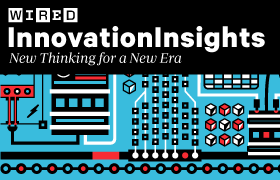 |
It’s always been challenging to succeed in retail but never more so than in today’s environment. Well-knownnames like Circuit City, Mervyn’s, and most recently, Coldwater Creek, no longer exist. And many companies are in line for the proverbial chopping block, including Aeropostale, Garmin and Blackberry.
A mixture of technology and best practices, including the right questions, can reduce or even eliminate those wasteful and unnecessary product losses. Thanks to big data and predictive analytics, a peek into the future of product success is no longer relegated to clairvoyance, provided you’re looking at the right data and asking the right questions. To accomplish this, retailers need to consider the following:
- What would you pay for it? Most companies ask customers simple questions like, “Would you buy it?” or “Do you like it?” but those questions don’t predict purchase behavior reliably. Understanding what consumers are willing to pay for a product prior to launch offers insight into the perceived quality and ultimate success of a product. A product that stirred excitement among test subjects but is priced too high won’t sell; conversely, a low-priced product people don’t “love” may end up a winner.
- What do you value about the product? By identifying attributes that contribute to a product’s value, retailers can understand how to make changes to improve its performance early in the development cycle. Retailers can also analyze trends— for instance jean wash or blouse colors—and plan accordingly.
- How can you acquire the most authentic data? According to the McKinsey Global Institute, big data has the potential to increase net retailer margins by 60%. The use of big data by retailers is a relatively new and promising idea, but in order for the data to be valid, it needs to be authentic. If you opt to ask consumers compelling and insightful questions through a simple survey, you will often receive “straight line” responses that unearth nothing solid. Retailers need to create an environment for consumers to engage with a company in an authentic way. Gamification is one example of how retailers are interacting with consumers: It’s fun, engenders loyalty, and is a great way to collect authentic data, which is predictive of consumer behavior.
- Are you going to help me predict what will actually sell? Are you polling the right customers for accurate information? Some consumers will give flawed input because they don’t truly understand the product category. For example, a new mother might be using a stroller every day, but in reality it’s her father that did all of the research for her before the purchase was made. A filtering and weighting mechanism can find the right consumers who understand a product’s value, and therefore results will be more predictive of the outcome.
- Are you my target consumer? In addition to filtering and weighting based on a person’s knowledge and ability to predict outcomes, businesses need to know how target consumers think and feel about new candidate products. This establishes the optimal customer profile for new products, so companies can effectively market the items. And, when courting new consumer audiences, retailers need to identify products that will appeal to BOTH new target customers as well as existing customers (don’t pull a J.C. Penney and abandon the core customer base while approaching a new one). Predictive analytics are helping successful retailers to identify specific consumer types and match them to products that will drive sales.
Companies like Abercrombie & Fitch are successfully applying best practices and technologies like predictive analytics when making product design, buying and pricing decisions. And it seems to be working: In May, Abercrombie & Fitch beat Wall Street expectations.
With an accurate advance view of how the market will respond, companies can drive margin gains because they have data to back up their decisions. With the right technologies and questions in place, retailers can turn their gold mine of information into revenue gold.
Greg Petro is founder and CEO of First Insight.















